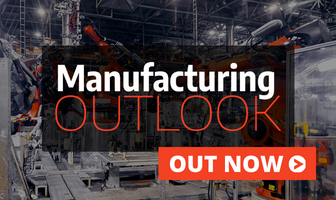Cloud computing is a powerful technology enabling companies to become more productive, improving both customer communication and supply-chain performance.
INTRODUCTION
Today, manufacturing is being transformed rapidly by changes in ICT, AI, robotics fields, cyber-physical systems (CPS), and increasingly powerful IoT devices.
The integration of these new technologies has meant that data usage has grown exponentially; however, current legacy systems are often limited in providing agility, flexibility and scalability. As such, a cloud strategy is seen as a logical next step due to its ability to store masses of data, while offering a more flexible solution.
Google CEO Eric Schmidt coined the term “cloud computing” in 2006, with its application mushrooming since then. This has resulted in an increasing number of cloud providers, with the market growing by over 30 percent in 2019.
However, cloud tactics must be embraced by the organisation as a whole to be effective. A cloud strategy should not focus solely on resolving technical issues, but aim to promote, develop, and extract tangible business benefits.
According to a study entitled the ‘3rd State of Manufacturing Technology’, manufacturers are using cloud for productivity applications (90 percent); new product introductions (45 percent); to improve communications and connectivity with customers (60 percent); and to improve supply-chain performance (60 percent).
The cloud also offers manufacturers scalability, operational efficiency, application and partner integration, data storage, management, analytics and enhanced security. At the most foundational level, cloud computing influences how manufacturers manage their operations, from ERP and financial management to data analytics and workforce training. In fact, Gartner predicts that by 2025 over half of ERP spend will be on cloud deployment.
Despite its various benefits, a cloud first strategy also poses new challenges and requires different decisions. Gartner stresses that these decisions start with “an understanding of the type of application and its technical characteristics, the needs and constraints of the associated data, and the integration of the application and data with other systems”.
When adopting a cloud first approach it is critical to bear in mind that ‘cloud first’ does not necessarily mean ‘cloud only’. Whether you are a manufacturer evaluating a new ERP system or considering how to make your existing ERP implementation better, an important issue to consider is where your software should run, namely in the cloud or on-premises. While some applications can migrate successfully to the cloud, there is a strong justification to keep some applications on-premises in their own infrastructure environments. This is simply because it takes time for an enterprise to develop the skills necessary to run a successful cloud operation. A cloud project is likely to be a multi-year effort, especially as it will take the organisation time to leverage all the benefits associated with cloud applications.
For a cloud first strategy, there are a few potential options which should be considered: public cloud, on-premises and hybrid.
PUBLIC CLOUD
Running your ERP system on a public cloud platform such as Microsoft Azure means you only pay for the resources used. Also, costs rise and fall depending on how the cloud infrastructure is deployed. The initial benefit, of course, is saving on your own investment in infrastructure, which can be a significant sunk cost.
For manufacturers that operate in several locations, or across multiple time zones, a cloud ERP means everyone has access to a single system, rather than running their own local instances. This results in major benefits in terms of centralised reporting, stronger governance and compliance, and improved collaboration across the enterprise. A single system also reduces the need for multiple skillsets to support different locations.
Businesses that opt for the public cloud still need to take responsibility for managing their resources and developing the skills to do it effectively. This requires a level of managed services.
A common model for running ERP in a public cloud is the Infrastructure-as-a-Service model (IaaS). The responsibility for the components of this service is divided between the customer and the cloud provider.
ON-PREMISE
Specific machine interfaces may be highly customised and difficult to implement via the cloud in some manufacturing environments.
Although it is rare, public cloud platforms have been known to suffer downtime. Downtime is the single largest source of lost production time, affecting productivity, impacting customer service and business goodwill.
An organisation can maintain full control by running its ERP system on-premises. This is critical for highly regulated industries with privacy and compliance concerns, where a measure of first-line control is essential. Hence companies with regulatory concerns have full accountability in the knowledge that they know exactly where their data is at all times, and how secure it is.
HYBRID
The ‘best-of-both-worlds’ option is to separate your ERP into both on-premises and cloud computing components. Collaborating with suppliers in terms of quotes and orders is simpler via a cloud portal. Customers and salespeople are assured of up-to-date information on deliveries and pricing via the web or mobile devices if this is cloud-based.
Organisations are turning to cloud-enabled ERP to drive ongoing innovation, increase agility and responsiveness, achieve greater elasticity and scalability, accelerate product development and reduce costs.
With manufacturing and distribution at the heart of their concern, SYSPRO customers have the ultimate flexibility to select a cloud ERP solution that best meets their specific requirements – whether on-premises, in the cloud, or hybrid. This flexibility allows them to transition practically, and at their pace, with easy, cloud-enabled access to the latest available technologies such as Bots, AI, and IoT.
































